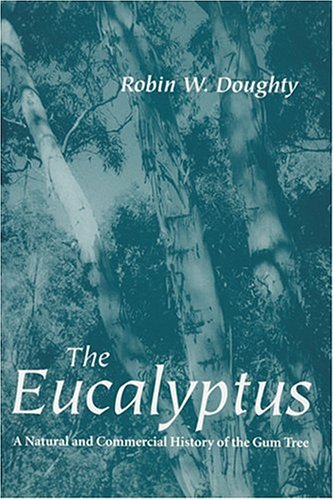Center Books in Natural History
1 total work
For some, eucalypts are the tree of the future: easily established, quick to grow and intensively cultivated. For others, eucalypts are a blight upon native landscapes and the livelihoods of indigenous people. This book tells the story of how the eucalyptus - or gum tree - spread from its native ranges in Australia to diverse habitats throughout the world. First regarded as an exotic novelty and a popular ornamental in European botanical and residential gardens, the eucalyptus became, especially after World War II, the favoured tree of the global pulpwood industry and international agroforesters. Robin W. Doughty discusses various reasons for the tree's popularity throughout history, ranging from the merely aesthetic, to its purported malaria-countering character in swamps and bogs, to its ability to adapt and mature quickly as a source of timber and firewood - a fact which especially appealed to railroad companies in the 19th century. Turning to the last half of the 20th century, Doughty raises important environmental, socioeconomic, and political issues surrounding the eucalypt.
In developing nations in Latin America and Asia, for example, the accelerated establishment of eucalyptus plantations has led to a heated debate about their impact upon the environment and about the social consequences of encouraging expansion on both private and community lands.
In developing nations in Latin America and Asia, for example, the accelerated establishment of eucalyptus plantations has led to a heated debate about their impact upon the environment and about the social consequences of encouraging expansion on both private and community lands.
